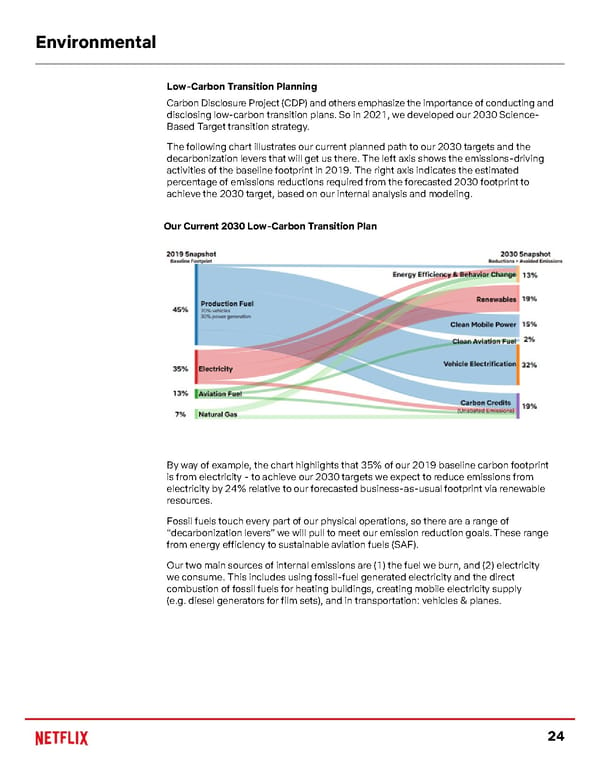24 Environmental Low-Carbon Transition Planning Carbon Disclosure Project (CDP) and others emphasize the importance of conducting and disclosing low-carbon transition plans. So in 2021, we developed our 2030 Science- Based Target transition strategy. The following chart illustrates our current planned path to our 2030 targets and the decarbonization levers that will get us there. The left axis shows the emissions-driving activities of the baseline footprint in 2019. The right axis indicates the estimated percentage of emissions reductions required from the forecasted 2030 footprint to achieve the 2030 target, based on our internal analysis and modeling. Our Current 2030 Low-Carbon Transition Plan By way of example, the chart highlights that 35% of our 2019 baseline carbon footprint is from electricity - to achieve our 2030 targets we expect to reduce emissions from electricity by 24% relative to our forecasted business-as-usual footprint via renewable resources. Fossil fuels touch every part of our physical operations, so there are a range of “decarbonization levers” we will pull to meet our emission reduction goals. These range from energy efficiency to sustainable aviation fuels (SAF). Our two main sources of internal emissions are (1) the fuel we burn, and (2) electricity we consume. This includes using fossil-fuel generated electricity and the direct combustion of fossil fuels for heating buildings, creating mobile electricity supply (e.g. diesel generators for film sets), and in transportation: vehicles & planes.
 Netflix ESG Report Page 23 Page 25
Netflix ESG Report Page 23 Page 25